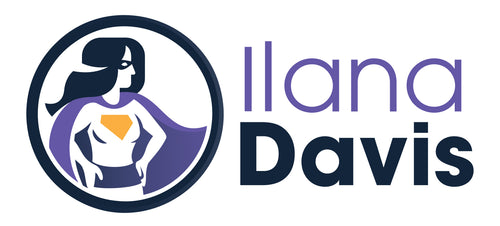How to choose the right Shopify theme for your store
Picking a Shopify theme is sorta like cooking a meal for a childhood friend you haven’t seen for a few years.
What will you cook? What type of food do they like and do they have any restrictions. Are they vegan? Do they have allergies? Are their kiddos picky eaters?
There are millions of things you can cook. I’ll tell you one thing though, I never remember what I ate at a friend’s house.
I remember the experience.
Finding a theme that fits
Shopify themes are the same except this time your friend is your customer. It’s not really about the theme. It’s about the experience.
What kind of experience do I want for my customers?
What are my competitors doing and do I want to do that or something different?
Will I have a lot of products or only one or two?
What are some features I want for my store?
Am I able to do some technical adjustments on my own, or will I need support?
Once you’ve brainstormed these options, you can start to look at different themes.
Shopify Theme Store or external themes
You wouldn’t find a recipe to make for your friend that requires obscure ingredients, takes hours to prepare and make a super extravagant meal for your friend that you’ve never made before and you’re not sure it’s any good.
To start, pick a theme in the Shopify Theme Store. In most cases, picking the safe option is best for merchants who are just starting out.
Free themes are a great starting point, especially if you’re new to Shopify, but know they lack functionality in many areas. A paid theme can get you much farther in terms of support and purchasing from Shopify’s Theme Store, you are more likely getting a theme that complies with any updated policies from Shopify. Generally, I avoid ThemeForest like the plague.
Though there are some pretty amazing themes outside of Shopify’s Theme Store, I see you Turbo from Out of the Sandbox, I highly encourage you to start with a theme from Shopify.
Turbo from Out of the Sandbox is a great option though they are not in the Theme Store. So if you’re willing to invest in an exceptional theme with awesome support, this is a great option.
Aesthetics are not all considered equal
When making a recipe, oftentimes we have to supplement a spice or use non-dairy milk. A recipe with minor adjustments can still produce the same great dish.
Sure, finding a theme that is appealing to you is important. One thing many merchants forget is that all themes are customizable. You can change the colors in the background, the announcement bar, buttons, and links. You can update the font, add your logo, hide content and create your own newsletter subscription form or link. It’s all customizable to your every need.
Look past the colors and see if the layout itself fits your brand.
If you want an easy-to-eat dish that everyone will love, spaghetti is usually a safe bet, right?
So pick a theme that has a general layout. You don’t have to have the craziest website and in fact, I wouldn’t recommend it. The layout should be easy to navigate and intuitive for your customers.
Pick the safe option. The layout of your store is a reflection of your brand and product.
Avoid assumptions based on a demo
Have you ever seen food bloggers take photos of their food and make the dish look delicious and simple? Only to realize the recipe takes 3 days to prep and you’ve got 1 hour.
Looking at a demo theme can give you similar false hopes. Just because the demo sells watches and you are selling watches, doesn’t mean the theme is for you.
It’s possible that the theme is great for watches, but remember it’s just a mockup. You’ll also want to look at the functionality, features, and flexibility of the theme.
For example, if you want a large hero image that uses the full-width home page, or if you want an announcement banner at the top to highlight free shipping, find a theme that has that built-in already.
Picking a theme that doesn’t have the functionality and features you want will increase your budget down the road when you have to hire a developer to custom code it for you.
In Shopify, you can search themes by features such as product filtering, SEO, full-width layout, sticky navigation, and FAQ pages to name a few.
Support is the bee’s knees
No matter how great of a cook you are, you will always look up something. Perhaps that’s needing a substitute for eggs and can’t remember if you should use flax meal bananas or applesauce.
No matter how technical you are, there are things that you’ll need help with. Finding a theme that provides support really is essential.
If you run into a bug and can’t upload photos or you can’t figure out how to update a section, you’ll want to have someone you can turn to. You can hire a developer, but that may cost even more money than if you had support from the theme developer themselves.
That’s why using Shopify’s Theme Store is ideal. You can easily contact Shopify Support. It’s what they are there for.
Plan for the future
I don’t have a great analogy for making dinner for your friend. So I’m just going to get to the point on this one.
Think about where you expect to be in the next few months. What about the next few years? Will you start with one product and grow to 10 or 20 or will you only have one product? Or are you jumping right in and plan to have thousands?
For free themes, on the smaller side, you can look at something like Narrative and larger shops can explore Venture. When you get into larger shops with thousands of products, something like Turbo may be better.
Then what?
I recommend you preview the theme first. Better yet, add it to your theme library, do some work by adding your colors, logo, and imagery. See how it feels.
It’s easy to update your theme in the future, but it does take work. Customizations don’t transfer over from theme to theme and some apps have to be reinstalled with each theme.
Have you put a lot of time into customizing your Shopify theme only to feel like you’ve stood still? Your theme is the biggest influence on your conversion rate and sales.
A weak or subpar theme can be salvaged with a Website Rescue. It includes dozens of fixes that plague Shopify stores.
JSON-LD for SEO
Get more organic search traffic from Google without having to fight for better rankings by utilizing search enhancements called Rich Results.




